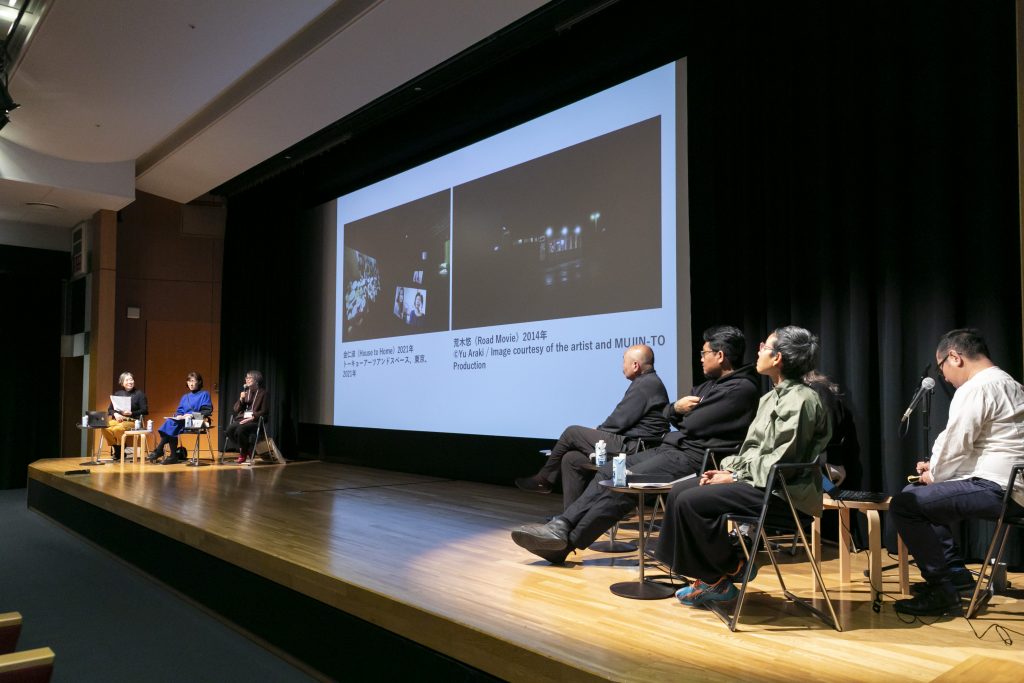-
SHARE
- X (Twitter)
STATEMENT
Sool(술), the Korean word for “alcohol,” is said to be a combination of the words soo (수), meaning water, and bool (불), which signifies fire. Its etymology is related to the fermentation of alcohol: during that process, the carbon dioxide being released causes the surface of the liquid to bubble, making it look like the drink is boiling due to an invisible fire within.
Fire in Water is a moving-image installation based on my research into the impact of Japanese rule on rice cultivation and alcohol production on the Korean Peninsula (mainly in what is now South Korea). While studying the impact of the Government-General of Korea, the body responsible for the Japanese colonial administration of the Korean Peninsula, on local industries, I have conducted field research at farms and breweries in South Korea several times from 2023 onward. Armed with the results of this research, I have sought to create a work that considers, through the lens of invisible entities such as microorganisms, bacteria, legal systems, and norms, how Japan and Korea̶ two very similar cultures̶ collided, and how one assimilated and otherized the other. The title, Fire in Water, reflects my interest in the agency of such invisible forces.
Korean alcohol production was consolidated during the Japanese colonial period in order to make it more efficient and to extract more tax revenue, and the Japanese method of brewing alcohol using isolated koji molds and yeasts was introduced. Native Korean rice varieties were similarly taken over by the Government-General and replaced with rice cultivars developed in Japan. In the words of the agricultural scientist Hiroshi Terao, rice, too, was to be part of the Yamato race, and the “Yamato race” of selectively bred seeds and isolated bacteria worked hand in hand with the Japanese legal system and network of food distribution to govern the Korean Peninsula. The impact of these practices has lingered long after the end of the Japanese occupation. Rice bred in Japan or derived from Japanese varieties is still being cultivated in present-day Korea, and Japanese-style koji is used to make mass-produced makgeolli. Korean rice and alcohol continue to bear traces of Japanese rule, inscribed in non-human, invisible entities such as bacteria and genetic sequences. These imprints of the past continue to shape the aroma of alcohol and the flavor of rice. Like fire in water, they bubble invisibly under the surface of Korean alcohol production and rice farming.
ABOUT THE WORK
NAGATA Kosuke, Fire in Water, 2025, With Japanese and English subtitles, 45min
Screening schedule(PDF)




